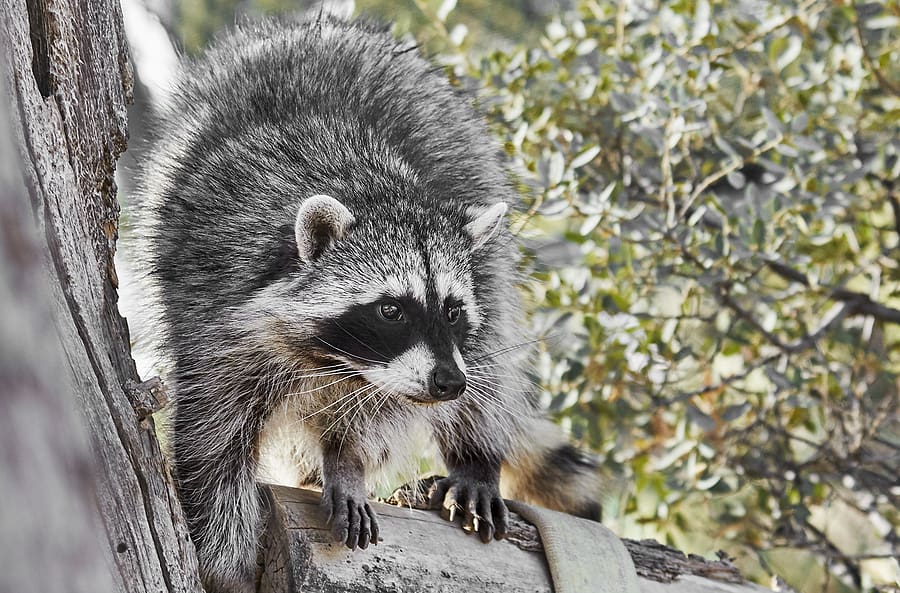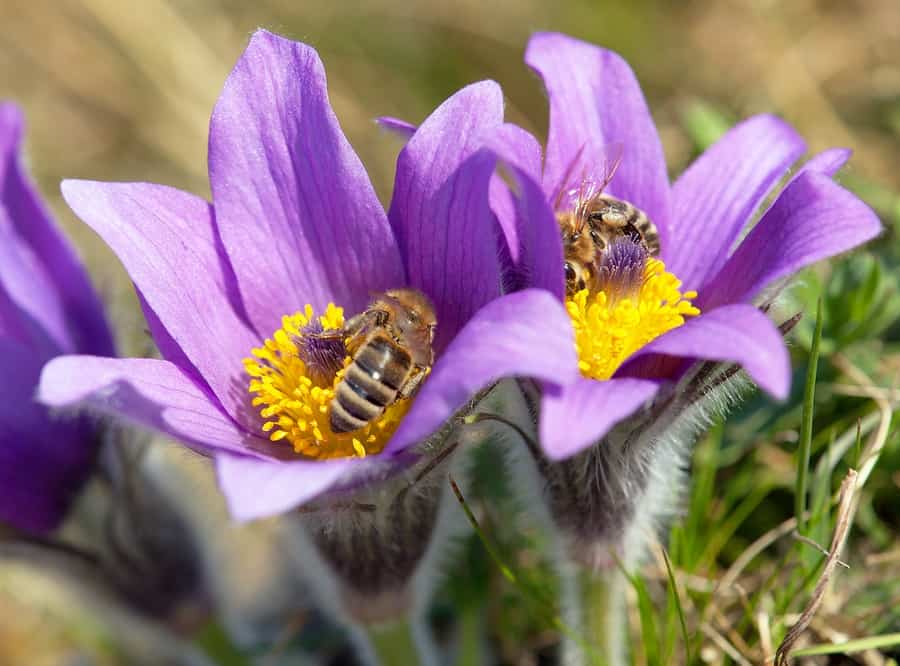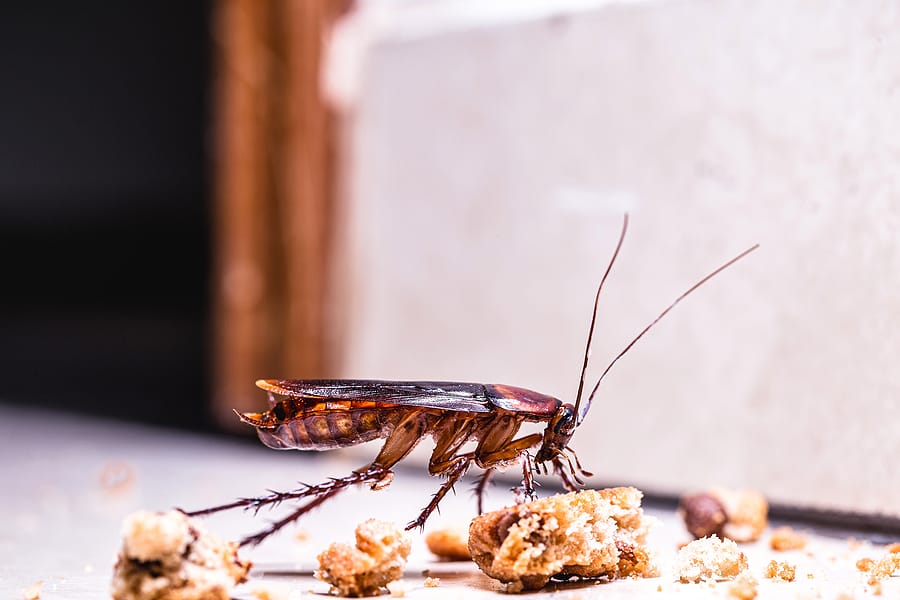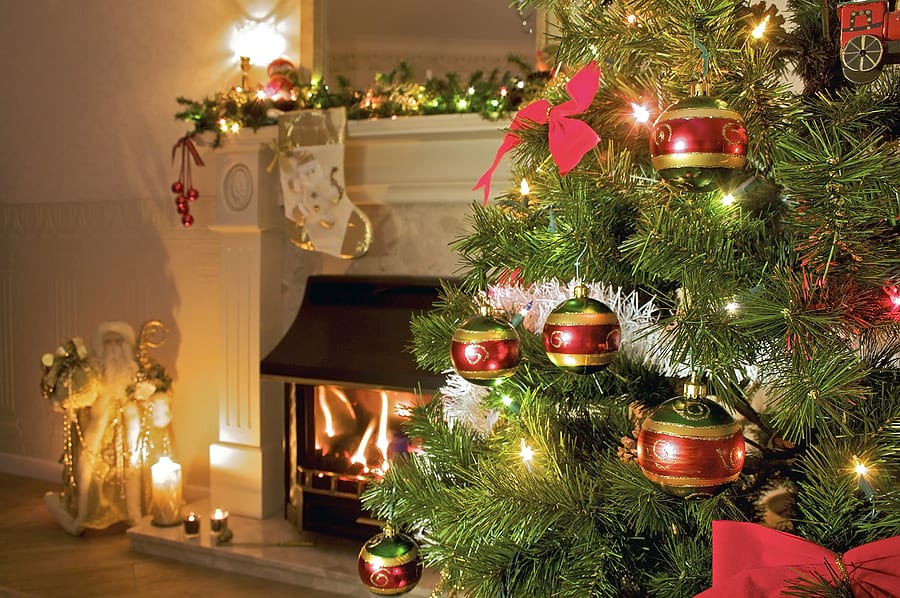READY TO GET STARTED?
REQUEST A FREE ESTIMATE
Fill out the form below or call (888) 466-7849 for a free, no-obligation estimate.

Warmer weather triggers the emergence of animals from hibernation. What many homeowners don’t realize is that wildlife will sometimes take refuge inside your home during the cold winter months. Once the weather starts warming up, these overwintering pests will start waking up and come out in droves looking for food and water. While some wildlife may be harmless, others can cause significant damage to both your home and your health. Some pests leave feces behind that can contaminate your food, kitchen surfaces, and even the air inside your home. Other pests can chew through wood and wires in your attic and walls, putting you at risk for fires.
Some common spring wildlife that can cause issues for homeowners include birds like swallows and sparrows; rodents like rats and mice; bats; squirrels; and raccoons. Birds use eaves, vents, and holes in the roof to make nests. Bird nest removal and bird control is regulated and usually best left to professionals. Rodents are some of the most common nuisance pests, getting inside through tiny spaces and reproducing quickly. Chewing and contamination are huge problems with rodents. While not as common as some of the other wildlife mentioned previously, bats can cause problems for you in the springtime. Bats will usually roost in gable vents and soffits but can also get into your home through the chimney or holes that they can use to access the attic. Larger mammals like squirrels and raccoons can get into attics and chimneys and even crawlspaces and basements. They are some of the most destructive spring wildlife, chewing through materials in your home and leaving behind huge messes.
So what can you do to keep these animals from seeing your home as a safe haven? Check out these tips to help control wildlife this spring.
What to Know About Fleas & Ticks
Commercial Mosquito Control: A No Spray Way for Your Business

No matter what the temperature is, pests are still in search of two things: shelter and food. This means that throughout the year, your home is at risk for any pest to enter and invade. Each season brings different pests to the varying stages of their life cycles. This means that while you can expect mosquitoes in the summer, you wouldn’t expect them in the winter. It’s important to know the seasonal pest patterns for your area so you can make the proper preparations for your home.
Winter is a time for hibernation and survival for many pests and wildlife. The colder weather has most pests looking for shelter. Depending on the pest, they often seek it both outdoors and indoors. Bees, wasps, and other stinging insects seek out places in logs or eaves of homes. Overwintering pests like spiders, cockroaches, and rodents tend to look indoors, sometimes in our homes, for a warm place to inhabit. The main key to preventing these pests is to start pest-proofing in the fall!
Springtime brings certain pests out from hibernation and many look to start the mating process. Pests that hibernate during the winter will awaken from a dormant state and emerge. Increased activity begins for pests like termites as their swarming season begins. Likewise, spring rain will drive ants out from their nesting sites in search for higher grounds. It’s important to ensure your home is prepared for these pests throughout the spring. Getting proactive now on your pest proofing will only ensure that these pests stay out of your home. Inspect the exterior and interior of the home for cracks or holes and make sure your yard is clear of standing water.
Backyard pests are out and about during the humid months of summer. While we tend to see fewer summer pests indoors, we do see a larger amount in our yards. Mosquitoes are especially active during these months due to the moisture of the spring and summer rains. Others like bees, wasps, and other stinging pests can be seen too.
Before winter hits, most pests are getting ready to hibernate and prepare for the cold weather during the fall season. In these months, certain pests and wildlife creatures will invade your property in search of shelter for the winter. Fall pests include ladybugs, boxelder bugs, and spiders. These pests are most likely looking for shelter before the colder temperatures hit.
If you feel your home is nesting unwanted pests or would like to ensure they don’t enter your home, call your local pest control company who can provide you with a home inspection, prevention plan, and treatment plan.

During the wintertime, many homeowners worry less about pests that are common during the spring and summer months. Contrary to popular belief, however, some pests don’t just die off; instead they use their survival instincts to get through the winter. Here is a list of four common winter pests and what you can do to prevent them once the warmer weather arrives!
Seeing ants marching inside your home is typically uncommon during the winter months. Ants are still around, however, as they are great at overwintering and preparing for the cold! Ants prepare for the colder weather starting in the fall where they indulge in lots of food. This preparation technique helps them put on fat so they can survive for weeks at a time without eating. When winter finally arrives, their body temperature and activity will decrease. They will then seal up their colonies built deep in the soil or under rocks, where they will stay until springtime arrives!
Once the warmer weather hits, ants are full of energy and ready to invade your home in search of more food. To make sure these pests don’t come inside, seal all open gaps and holes, especially around areas where pipes and wires enter your home.
Bed bugs are active year-round, meaning they will invade your home whether it’s cold or warm outside. These pests are extremely resilient and can survive temperatures from nearly freezing to 122 degrees Fahrenheit! Because they can withstand these extreme temperatures, bed bug control can be difficult. Common signs of bed bugs include rusty, reddish-brown stains on bed sheets or mattresses, bites on exposed skin when sleeping, and eggs or egg casings.
After coming home from traveling, unpack your clothes and put them directly into your washing machine to clean. Always inspect your luggage for bed bugs and use a vacuum to clean it before storing it.
Most cockroaches can survive year-round if they have access to a warm and moist environment. Unfortunately, this means your home is the perfect place for these pests to inhabit. German cockroaches are one species that are known to survive harsh weather conditions. When cold hits, these roaches are great at sneaking indoors through small gaps and holes.
Cockroaches prefer to live in humid habitats, especially in residential kitchens, bathrooms, and basements. To ensure these pests don’t infest your home, make sure to clean up any spills or food crumbs, vacuum often, and use weatherstripping to seal doorways.
It’s inevitable to see mosquitoes out during the summer months; but it may be surprising to most that these pests don’t die off when winter hits. Mosquitoes will, instead, overwinter or hibernate in protected areas such as hollow logs. When the temperatures increase, female mosquitoes will awaken and seek out a blood source to feed on to begin developing eggs.
Preparing for mosquito activity before summer arrives is crucial in protecting your home and family. Confirm your home is mosquito-proofed by eliminating any standing water, debris from your gutters, and sealing any holes or gaps leading inside the home.
To prevent these pests from invading your home when spring and summer hit, consider contacting your local pest control company. A trained professional can then provide you with an inspection, prevention, and treatment plan.

It’s nearly impossible not to spend money during the holiday season. While we want to enjoy this time of gift-giving with our loved ones, it can sometimes burn a hole in our wallets! Even though the holidays are upon us, you can still find ways to cut back on costs and even create a healthier environment for your home!
Attic Insulation
Attic insulation can help save on energy costs and ensure you are living in a healthy environment. Some say that attic insulation is essential in cutting down on air and heat that escapes from your home. Reducing the amount of energy escaping can help lower your energy bills, potentially saving you up to 30%!
Besides the financial impact of attic insulation, it can also help prevent overwintering pests. Pests like rats, mice, and roaches are looking for a warm place to stay over the colder months. They can easily damage your home and bring in harmful diseases. Attic insulation can help reduce and control the number of pests making their way inside your home.
Crawlspace Enclosure (CrawlSpace Care)
Crawlspace enclosure provides many benefits to homes that have them. Enclosing your crawlspace can help lessen the workload of your HVAC unit. This can help save you up to 18% on your utility bill and control humidity levels throughout your home.
While saving money on your utility bill is always a plus, making sure your family is living in a healthy environment is just as important! When you enclose (whether it’s the attic or the crawlspace), you will reap the benefits of improved air quality, consistent temperatures, and pest prevention including wood-eating insects.
Investing in insulation in your home will not only help you during the holiday season but year-round. For more information or to get a free quote, contact your local pest control company where a professional can recommend the best plan for your home.

One thing that is sure to put a damper on your holiday spirit is unwanted pests! The holiday season provides ample opportunity for household pests to make their way into your home. Spiders, rodents, ants, ticks, and other overwintering pests will commonly invade in search of food, water, and shelter.
Holiday pests will use Christmas trees, wreaths, firewood, decorations, storage boxes, luggage, and more to hitch a ride into your home. Some pests will hide in the branches and crevices of Christmas trees, wreaths, garland, and firewood. They can even lay eggs which will then hatch after you bring them inside. Mice and other pests will take refuge inside your storage boxes that hold decorations. You may find live pests, dead pests, or droppings inside these containers. You may also find that they have chewed or damaged wires inside the box.
Increased travel at the holidays increases the risk of bed bugs. These pests hitch a ride on unsuspecting travelers’ luggage, coats, purses, and more. The kitchen is often the central gathering place for holiday cooking and meals. It can also be a big source of food for unwanted pests. Crumbs, spills, leftovers, and dirty dishes all provide an easy food source for holiday pests.
Don’t let pests ruin your holiday plans. Keep them away with these 5 holiday pest control tips.
Pests can come indoors on live trees, wreaths, garland, and firewood. Carefully inspect these items outside before bringing them inside. Make sure to check for live pests, nests, and eggs. Shake them out carefully to disturb any slumbering pests and to knock off any hidden pests.
Pests will hide out in boxes used to store decorations and other holiday items. Unpack these items outside and inspect them all carefully for signs or pests including dead bugs, live bugs, droppings, gnaw marks, and other damage. Carefully check strings of lights and other wires for signs of chewing.
Holiday meals are centered around the kitchen. Clean up the kitchen after cooking. Wash dishes or load the dishwasher and don’t leave dirty dishes out overnight. Sweep up any crumbs from the floor and clean up spills immediately. Make sure to empty the trashcan frequently, especially before bedtime.
Bed bugs are common at the holidays because of the increase in travel. Whether you are going away or you have guests coming in, inspect the bedding carefully for bed bugs. Signs of bed bugs include live bugs, reddish brown spots on bed linens, and shed skins. These can be found on beds, mattresses, box springs, linens, curtains, furniture, and even baseboards. Check luggage before bringing it into the house. Wash clothes in hot water and dry on hot heat as soon as you return home.
At the end of the holidays, taking down decorations and storing them for next year becomes a priority. Store your holiday decor in plastic storage bins with sealing lids rather than cardboard boxes or bags. Don’t pile discarded trees, garlands, or cut firewood near your home as these can attract termites and rodents.
The holiday season is a time of great joy, family, and friendship. Don’t let holiday pests ruin your year. If you have a problem with any type of critter in your home, contact your local pest control company for a free inspection and comprehensive treatment plan.
Crawlspace Enclosure: The Cure For Cold Feet